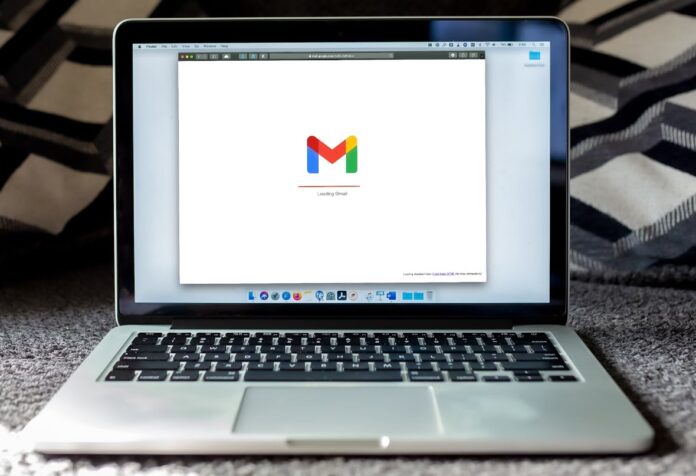Email has been a crucial part of our digital world for many years. Yet, it’s under threat. Recently, Google and Yahoo took a stand to get rid of all these email attacks and make emails one of the safest modes of communication. They highlighted the importance of DMARC, especially for mass emailers.
In 2022, a survey showed that 85% of organizations were hit by bulk phishing attacks. But now you don’t have to worry much. With changes rolling out since February 2024, there’s much to adapt to.
This guide is also about the essentials of DMARC, why it’s critical, and how to stay compliant. Soon it, it will become the most important thing for businesses that use bulk emails.
A Deep Dive into DMARC
Think of DMARC as the bouncer of the email club, working hand-in-hand with its pals, DKIM and SPF. DKIM is like a secret code on each invite, proving it’s legit, while SPF is the guest list at the door, checking who’s allowed to send emails on your domain’s behalf.
DMARC steps in like the cool club manager who uses both the secret code and the guest list to make sure only the real party-goers get in. It’s like saying, “No fake IDs allowed!” If anyone tries to crash the party pretending to be you, DMARC spots them from a mile away and keeps your email club safe.
Google and Yahoo’s New Mandate: The What and Why
The new mandate started in February 2024, in which Google and Yahoo require bulk email senders—defined as entities sending over 5,000 emails per day—to adopt a DMARC policy within their Domain Name System (DNS).
The essence of this requirement is for emails to pass DMARC alignment, ensuring they comply with either DKIM or SPF standards. This move targets reducing spam and phishing attempts, creating a safer email ecosystem.
Timeline and Gradual Enforcement
April 2024: Google will gradually begin rejecting non-compliant traffic, affecting only non-compliant traffic. Google strongly recommends using the temporary failure enforcement period as an opportunity for senders to make necessary adjustments toward DMARC compliance.
June 2024: Additional requirements come into effect, including:
- DMARC Record with ‘None’ Policy (p=none): Every sender needs to set up a DMARC record, at the very least with a policy of “none.” This policy starts monitoring and reporting on emails without impacting delivery.
- One-click Unsubscribe for Marketing Emails: All marketing emails must include an easy one-click option for unsubscribing. This makes it simple for people to opt out of future messages.
- No Help for High Spam Rates or Non-compliance: Senders with a spam report rate over 0.3%, or those not following authentication and easy unsubscribe rules, won’t have access to mitigation measures.
Specific Requirements Detailed for Bulk Senders:
- SPF and DKIM for Google and Yahoo Emails: If you’re sending emails to Google or Yahoo, you must use SPF and DKIM. These help prove you’re the real sender and keep your emails safe.
- Must Have a DMARC Policy: You need a DMARC policy. It protects your domain and stops people from pretending to be you in emails.
- DMARC Alignment is Key: Your emails must have DMARC alignment. This means the DKIM signature must match your domain. It’s important to make sure your emails are from a trusted source.
- One-click Unsubscribe: For emails people have signed up for, you must make unsubscribing easy. Include an unsubscribe link in your emails that works with one click. If someone wants to unsubscribe, they must do so within two days. This gives people more control over what they receive.
Navigating the Challenges
Implementing DMARC can be difficult as it’s a little complex but you can follow the below-mentioned phase approach to better tackle it.
- Monitor Mode (p=none): Start by configuring your DMARC to monitor mode, allowing you to collect data and understand your email ecosystem without affecting deliverability.
- Quarantine Policy (p=quarantine): Gradually move to a quarantine policy, where emails failing DMARC checks are transferred to spam, allowing further refinement.
- Reject Policy (p=reject): Finally, implement a reject policy that blocks emails failing DMARC checks, ensuring only authenticated emails are delivered.
The Broad Spectrum of Email Types Affected
An often-overlooked aspect of such sweeping regulations is the variety of email types they impact. From the day-to-day operational messages to the marketing blasts that drive business growth, no email category is exempt from the reach of these new rules.
Imagine the ramifications for your users who may get locked out of their accounts without the ability to receive a password reset email or the customer who doesn’t receive their purchase confirmation and is left in the dark about their order status.
Types of Emails Impacted
- Newsletters: The newsletters must now adhere to stricter authentication standards.
- Password Resets and Account Confirmations: These transactional emails play a major role in customer experience so it is most likely to be impacted by this update.
- Shipping Notices and Purchase Receipts: It is essential for e-commerce operations to ensure customers are informed about their order status and details.
- Account Activity Alerts: These alerts are important for security and user awareness. They keep users informed of changes or actions within their accounts.
- Product Announcements and Sales Promotions are key drivers of revenue and customer engagement. These marketing communications must now be sent with compliance in mind.
- Content Releases and Event Invitations: Whether it’s new content or event details, it’s crucial to engage your audience without risking deliverability issues.
What’s at Stake if You’re Behind the Curtain When the Deadline Hits?
If your business relies on email communication, think carefully. Email authentication isn’t optional; it’s essential. Without it, your emails might not land in inboxes at Google, Yahoo, and Apple iCloud.
Imagine sending a bunch of emails. But, if you skip SPF and DKIM setup or don’t have a DMARC policy, you’re in trouble. It’s like sending your emails into a black hole. Here’s why compliance matters. It’s not just ticking boxes. It’s about making sure your emails actually reach people. Without following these rules, your emails might as well be invisible.
This is especially true if you’re emailing in bulk to Google and Yahoo users. Without the right authentication, your messages could get lost. It’s like being at a party but locked out of the main room.
Conclusion: PowerDMARC Lights the Way to Compliance
As we wrap up the DMARC update journey, a helper shines through. Meet PowerDMARC, your easy fix for email safety rules.
PowerDMARC packs tools like SPF, DKIM, and DMARC into one. It makes it simple to manage how your emails are sent and protected. It’s like having a super-tool that follows the rules, keeps an eye out for email threats, and breaks down tech talk into easy reports.
With PowerDMARC, you can send emails worry-free, knowing everything’s secure and under control. It’s your go-to for ensuring your emails get where they need to go safely.








































